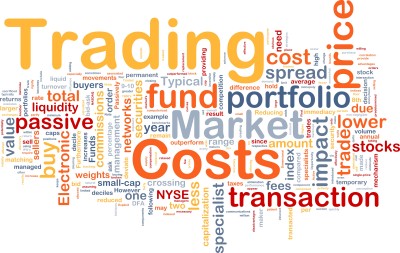The Financial Freedom Community has for four years studied the safe withdrawal rate and how to make use of our findings to develop insights into how to invest more successfully for the long term. The purpose of this article is to explain to newcomers to our movement why so many of us view it as so important to calculate this number accurately.
Reason #1 — Knowing the safe withdrawal rate advances one’s understanding of the rarely discussed Distribution Stage of the Investing Life Cycle.

There are two stages to the Investing Life Cycle. During the Accumulation Stage, you accumulate assets by spending less than you earn and adding the difference to your investment portfolio. During the Distribution Stage, you make withdrawals from the wealth accumulated in earlier years to finance the costs of day-to-day life.
Most of the investing literature focuses on what happens during the Accumulation Phase. But investors need to develop an understanding of Distribution Phase issues as well.
The reason why the conventional focus has been the Accumulation Phase is that most investors do not personally experience Distribution Phase issues (or at least are not aware that they do so) until they retire. For many, this is not until age 65 or perhaps even later. Most investment analysts seek to provide guidance to the larger group of investors that has not yet reached age 65. So the Distribution Phase realities are today “the secret realities” of investing. These realities are of great importance, but are generally unknown.
The reason why Financial Freedom Community members care so much more about the Distribution Phase is that we aim to enter the Distribution Phase sooner. Those who retire at age 50 begin depending on their investments to finance their costs of living 15 years sooner than do those who retire at the conventional retirement age.
The reality is that all investors should be concerned about Distribution Phase issues. Even investors who are not currently taking money out of their investment portfolios to cover their costs of living want to see their portfolios grow gradually larger over time. If they instead see their portfolios shrink, they will be tempted to abandon their buy-and-hold strategies at the worst possible time for doing so. So even these investors are in an indirect (but significant) way affected by Distribution Phase realities. Any investor concerned about the current value of his portfolio as well as its expected long-term value (and that’s all of us) possesses in part the short-term investing perspective that usually is deemed applicable only to Distribution Phase investors.
Safe withdrawal rate analysis reveals the secrets of the Distribution Phase of the Investing Life Cycle both to those who are directly affected because they are in retirement or approaching retirement and to those who are indirectly affected because they are influenced by the universal human desire to see their portfolios grow over time rather than diminish.
Reason #2 — Knowing the safe withdrawal rate makes it possible to formulate a plan to make use of one’s investment assets to cover one’s costs of living.
Even those who find SWRs boring make use of SWR analyses in their financial planning. It is possible to rely on improperly calculated SWRs. It is possible to rely on SWR analyses without knowing you are doing so. It is not possible to develop a financial plan without giving consideration at least in an indirect sense to the SWR issue.
It is not possible to craft a financial plan without reducing your thoughts about how your investments will do to numbers. To be sure, many investors are not conscious of the process by which they translate their investing expectations into numbers. But all do so. It is an unavoidable part of the planning process.
 Say that an investor decides that he will withdraw 10 percent from his portfolio each year. Is this investor making use of safe withdrawal rate analysis? He is. The 10 percent number is the average annual return of stocks, not adjusted for inflation. The investor is using an analytically invalid approach to safe withdrawal rate analysis to put together his plan. But he is making use of the concept that drives safe withdrawal rate analysis (the translation of subjective expectations of how stocks will perform into numbers that can be used in a financial plan) all the same.
Say that an investor decides that he will withdraw 10 percent from his portfolio each year. Is this investor making use of safe withdrawal rate analysis? He is. The 10 percent number is the average annual return of stocks, not adjusted for inflation. The investor is using an analytically invalid approach to safe withdrawal rate analysis to put together his plan. But he is making use of the concept that drives safe withdrawal rate analysis (the translation of subjective expectations of how stocks will perform into numbers that can be used in a financial plan) all the same.
We measure our financial worth through the use of numbers. So all of our thoughts about what will happen in our money lives must be reduced to numbers before they are incorporated into a financial plan.
Say that an investor decides that he will withdraw 20 percent from his portfolio each year. Is that investor making use of safe withdrawal rate analysis too? He is. In this case, the assumptions are even more far-fetched. The investor is not only ignoring the effects of inflation. He is assuming that he possesses a power to invest far more effectively than most. Still, the concept that he is employing to arrive at the 20 percent number is the safe withdrawal rate concept. He is translating his (wildly optimistic) beliefs about his investing abilities into numbers for use in a financial plan.
When you hear people talking about how to determine safe withdrawal rates, what they are really talking about is how to make the shift from the subjective to the objective, a shift that must be made as part of the process of creating any financial plan.
Reason #3 — Knowing the safe withdrawal rate methodology used by an investment advisor reveals to you the level of sophistication of that advisor’s understanding of investment issues.
Since it is not possible to engage in financial planning without making use of some form of safe withdrawal rate analysis, all investment advisors make use of some form of this analytical tool. Not all advisors offer equally sound advice, of course. That’s because different advisors apply different levels of sophistication to their use of the tool.
There are four levels of sophistication (and a number of variations to several of them) that apply to most safe withdrawal rate analyses available today:
(1) The Caveman Approach: The most uninformed approach is the approach noted above, looking at the average percentage earnings of stocks without making an inflation adjustment. This obviously flawed approach indicates that it is safe to withdrawal 10 percent of assets from a high-stock-allocation portfolio each year because the average earnings percentage on stocks is about 10 percent;
(2) The Old Peter Lynch Approach: A better approach is to use the real annualized return on stocks as the withdrawal rate for your financial plan. This number is often quoted as 7 percent (6.8 percent is probably a more accurate number). It wasn’t too many years ago that Fidelity Legend Peter Lynch used this approach in an article he wrote. He was corrected by Dallas Morning News columnist Scott Burns, who pointed to the findings of conventional-methodology safe withdrawal rate studies (see below) to explain Lynch’s analytical error. Lynch acknowledged the error when it was brought to his attention. However, there are still many smart people today who are not sufficiently familiar with how the Distribution Stage works to see the not-so-obvious flaw to this approach;

(3) The Conventional Methodology Approach: The third approach is the conventional-methodology approach pointed to in Burns’ criticism of the Lynch approach. The Trinity study, a conventional methodology study, was “breakthrough research” (this is William Bernstein’s phrase, but I share his view on this point) because it revealed the flaws of the Lynch approach. The flaw is that, while stocks provide a 6.8 percent annualized return over long periods of time, there are many returns sequences in the historical record that would cause big losses in the early years of a retirement if they were to pop up again. Retirees with high stock allocations who suffer big drops in portfolio value in the early years of their retirements need to sell shares to cover their costs of living. Investors who sell stocks when prices are down never realize the 6.8 percent annualized returns obtained by those who hold their shares through upward and downward price movements. These studies report a 4 percent safe withdrawal rate for high-stock-allocation portfolios. The conventional methodology studies represented a big step forward in sophistication from The Old Peter Lynch Approach. However, this approach also suffers from grave flaws;
(4) The Data-Based Methodology Approach: The flaw with the conventional methodology studies is that they report the safe withdrawal rate as a fixed number, one that does not change with changes in valuation levels. The historical data shows that changes in valuation are the biggest factor affecting the long-term survival of a portfolio employing a particular withdrawal rate. So analytically valid studies must include an adjustment for changes in valuation levels. This approach shows that, at times of moderate valuations, the safe withdrawal rate for an 80 percent S&P portfolio is indeed about 4 percent (the number given in conventional methodology studies for retirements beginning at all possible valuation levels). At times of high valuation, it can drop to 2 percent or less (the number was 1.6 in January 2000). And, at times of low valuation, it can rise to 6 percent or higher.
Each advance in the sophistication of the safe withdrawal rate methodology being used represents an advance in the investing analyst community’s understanding of how stocks work. There are some who today still use one of the first two methodologies. There are many who still use the third methodology. But the state-of-the-art methodology today is the data-based methodology, as this is the only one of the four approaches that aims to report accurately the safe withdrawal rate as indicated by the historical stock-return data rather than to “spin” (either consciously or unconsciously) the report on what the data reveals in deference to some personal bias or misperception of the researcher.
There are only a small number of investment writers who today are aware of the breakthrough insights unearthed by the Financial Freedom Community during its Great Safe Withdrawal Rate Debate. These include the following names: (1) John Walter Russell; (2) Rob Arnott; (3) Robert Shiller; (4) William Bernstein; (5) Peter Bernstein; (6) Scott Burns; (7) Peter Ponzo; (8) Ed Easterling; (9) the poster using the screen-name “Raddr;” and (10) the poster using the screen-name “BenSolar.” Each of these individuals possesses a more sophisticated understanding of what the historical stock-return data says about how to invest successfully for the long run than do most other investing advisors. That does not mean that they always offer sound advice, of course. But I think it is fair to say that this is a factor that should be taken into consideration when assessing the advice they offer and comparing it to the advice offered by advisors who are not today aware (or who pretend not to be today aware) of the important safe withdrawal rate findings of recent years.
Reason #4 — Knowing the safe withdrawal rate provides valuable insights for use in deciding on an asset allocation strategy.
 Some conventional methodology studies include asset allocation advice. High stock allocations are generally identified as “optimal.” That’s so regardless of the valuation level that applies on the start-date of the retirement. Since the conventional methodology studies fail to adjust for valuation changes, they are essentially reporting what the safe withdrawal rate would be in a world in which valuations always remained at moderate levels. At times of high valuations (like today–this article was written in January 2006), the asset allocation advice being given is dangerous because stocks do not offer nearly so powerful a value proposition at times of high valuation as they do at times of moderate valuation.
Some conventional methodology studies include asset allocation advice. High stock allocations are generally identified as “optimal.” That’s so regardless of the valuation level that applies on the start-date of the retirement. Since the conventional methodology studies fail to adjust for valuation changes, they are essentially reporting what the safe withdrawal rate would be in a world in which valuations always remained at moderate levels. At times of high valuations (like today–this article was written in January 2006), the asset allocation advice being given is dangerous because stocks do not offer nearly so powerful a value proposition at times of high valuation as they do at times of moderate valuation.
Some have concluded from this failing of the conventional methodology studies that safe withdrawal rate analysis should not be used to inform one’s asset allocation strategy. I disagree. I believe that knowing the safe withdrawal rate can be a big help in the formation of a sound long-term asset allocation strategy. The conventional methodology studies are “highly misleading” (William Bernstein’s phrase). But the idea of using safe withdrawal rate analysis to determine asset allocations is a very good one indeed.
The message that the historical data is trying to tell us is that asset allocations should change as valuation levels change. Consider the statement a few paragraphs up, that the safe withdrawal rate for an 80 percent stock allocation moves below 2 percent in some circumstances and moves above 6 percent in some circumstances. With the value proposition of stocks changing that dramatically, keeping a steady allocation percentage just does not make sense.
Stocks are like any other asset you purchase, according to the historical stock-return data. Sometimes they are priced right, sometimes they are not. Just as you can achieve financial freedom years earlier by buying clothes and toys and groceries when they are on sale, so you can move up the day when you overcome paycheck dependence by concentrating your stock purchases in years in which stocks are being sold at a 20 percent or 30 percent or 40 percent discount from their usual price.
To take advantage of the great prices at which stocks are sometimes made available, you need to have some money invested in asset classes other than stocks at times when stocks are being offered only at high prices. So the “optimal” stock allocation, like the safe withdrawal rate, is an ever-changing number. Analytically valid safe withdrawal rate studies provide you with valuable insights as to what stock allocation percentage is best for you at all of the various possible valuation levels.
Reason #5 — Knowing the safe withdrawal rate diminishes the influence of fear and greed on your investing decisions.
 Investing is a highly emotional endeavor. The pull of fear and greed has tripped up millions of well-informed investors. Much investing advice informs us on all sorts of issues that matter, but that matter not as much as gaining an ability to rein in our negative emotions. Many money advisors know how damaging fear and greed can be to your hopes of achieving your financial freedom dreams. The trouble is that not too many know of tools to help you overcome the influence of these two dark emotions.
Investing is a highly emotional endeavor. The pull of fear and greed has tripped up millions of well-informed investors. Much investing advice informs us on all sorts of issues that matter, but that matter not as much as gaining an ability to rein in our negative emotions. Many money advisors know how damaging fear and greed can be to your hopes of achieving your financial freedom dreams. The trouble is that not too many know of tools to help you overcome the influence of these two dark emotions.
The best protection against the negative influence of fear and greed is — safe withdrawal rate analysis!
The beauty of an accurate safe withdrawal rate analysis is that it tells you how stocks really have performed in the past, not how you wish they had performed. The safe withdrawal rate is a number. It is something that is calculated. It is objective. It is real.
That means that a properly done safe withdrawal rate analysis can help you overcome the emotions that otherwise undermine your hopes of winning financial freedom early in life. Fear and greed cause us to make the wrong investing decisions at the wrong time. We are pulled to want to buy stocks when prices are high and to sell stocks when prices are low.
Safe withdrawal rate analysis provides a counter to those destructive emotional pulls by letting us see in an objective way how much the value proposition of stocks drops as stock prices rise and how much the value proposition of stocks rises as stock prices drop.
Reason #6 — The safe withdrawal rate combines lots of information bits into a single number.
The safe withdrawal rate is a single number. Sometimes it’s 2 percent, sometimes it’s 6 percent., sometimes it’s 4 percent. Whatever it is, it’s a single number.
It takes an analysis of thousands of numbers to generate that single number, however. What you are getting when you look up the safe withdrawal rate is a number that summarizes the information bits contained in thousands of others. The safe withdrawal rate is like the title of a book — it is a succinct statement of all that is contained inside.
It’s a good idea to study the historical data itself, not just the number generated by making reference to it. You will develop a deeper and richer understanding of the lessons of the historical stock-return data if from time to time you examine the data for yourself.
But you don’t always have time for that. There are days when all you have time for is to look up the safe withdrawal rate that applies for that day’s valuation level. That number tells you the basic information, the essential guidance that you need to make a quick assessment as to whether you should be increasing your stock allocation, decreasing it, or leaving it stable.
We all need shortcuts. The number you get from a safe withdrawal rate analysis is one very useful shortcut statement of the value proposition represented by stocks at a particular point in time.
Reason #7 — Knowing the safe withdrawal rate allows you to make effective comparisons between different investing options.

Your common sense tells you that stocks offer a stronger value proposition at times of low valuation than they do at times of high valuation. But your common sense doesn’t tell you how much a difference valuation levels make. Knowing the safe withdrawal rate does.
Your common sense tells you that there are some circumstances in which it is best to put most of your money in stocks and that there are other circumstances in which it is best to make a significant investment in an alternate asset class, such as Treasury Inflation-Protected Securities (TIPS) or ibonds. But your common sense doesn’t tell you how much to lower your stock allocation in circumstances in which the relative value proposition for TIPS or ibonds is strong. Knowing the safe withdrawal rate does.
Making effective investment decisions requires making comparisons of the options before you. You need to take into consideration lots of things other than the safe withdrawal rate to make effective decisions. But knowing the safe withdrawal rate is a big help. Numbers can easily be compared to other numbers. It is easy to compare the safe withdrawal rate that applies for stocks at one time with the safe withdrawal rate that applies for stocks at another time. It is easy to compare the safe withdrawal rate that applies for stocks at one particular time with the safe withdrawal rate that applies for an alternate investment class at that time.
Reason #8 — Knowing the safe withdrawal rate helps you develop a real-world understanding of what stocks are and how they work.
Stock investing need not be as complicated as many people make it out to be. There are indeed aspects of the investing experience that are hard to understand. But it is the fundamentals that matter most, and coming to understand the fundamentals is not all so terribly difficult.
The problem for most investors is not the things that they do not know, but the things that they think they know for certain that are in fact just not so. The conventional wisdom on stock investing changes dramatically as we move from bull markets to bear markets and back again. During bull markets, the benefits of owning stocks are exaggerated. During bear markets, the drawbacks of owning stocks are exaggerated. To invest successfully for the long term, you need a compass, something that roots you in the fundamental realities so that you can tune out the nonsense noise that steers many investors in the wrong direction.
Knowing the safe withdrawal rate provides you the compass you need. Calculated properly, the safe withdrawal rate is not subject to spin. It is a number, something hard and objective and real. An improperly calculated safe withdrawal rate is really just a reflection of the opinion of the “researcher” who generated the number. That sort of safe withdrawal rate is not objective. Those sorts of numbers are not the product of science. They are the product of science fiction. But knowing the real number roots you in something real.

The Financial Freedom Community has made great progress in recent years in its effort to learn how to calculate the safe withdrawal rate properly. I do not believe that the job is yet finished. Our new methodologies represent a significant advance over the old ones, but we still have work to do in learning how to keep bias out of our calculations and how to report straight and true what the historical data is telling us re how to invest for the long term.
We need to keep working at it. Knowing the true safe withdrawal rate matters.
